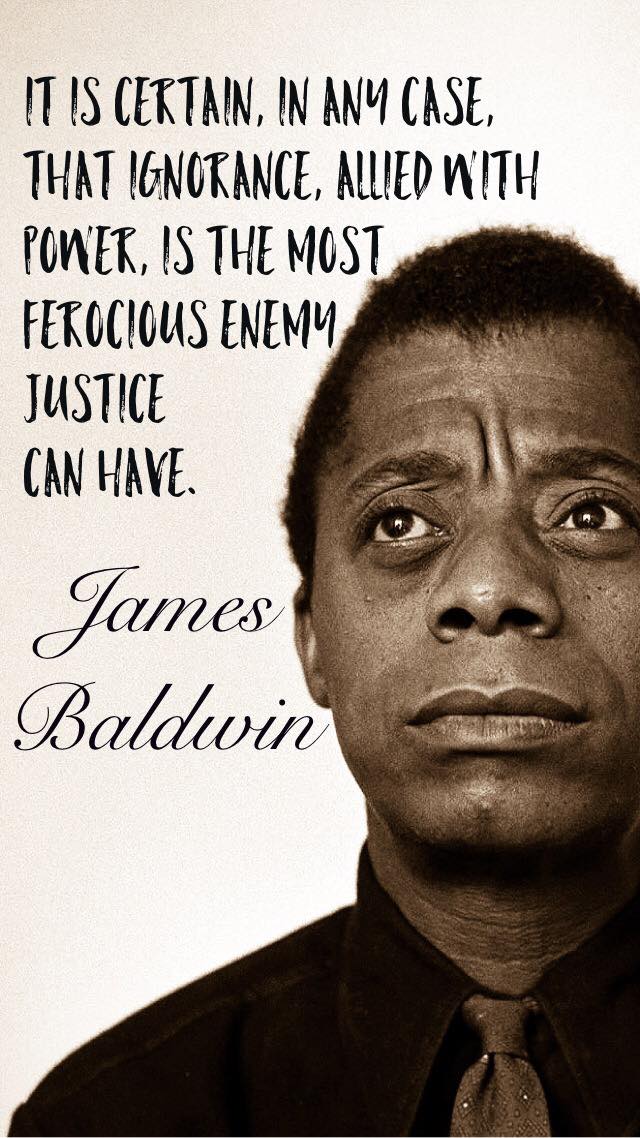Blog
Friday February 14th 2025 7pm. The fourth in a series of performances of the Little Shop of Horrors by Theatre 55 at the Gremlin Theater in St Paul. Music by Shirley Mier, Lyra Olson, Jamie Carter and mick laBriola. Featuring vocalists Patty Lacy and Van Nixon.

The Rosette Nebula, NGC 2237, is not the only cosmic cloud of gas and dust to evoke the imagery of flowers, but it is probably the most famous. At the edge of a large molecular cloud in Monoceros some 5,000 light years away, the petals of this cosmic rose are actually a stellar nursery. The lovely, symmetric shape is sculpted by the winds and radiation from its central cluster of hot young, O-type stars. Stars in the energetic cluster, cataloged as NGC 2244, are only a few million years young, while the central cavity in the Rosette Nebula, is about 50 light-years in diameter. The nebula can be seen with a small telescope toward the constellation of Monoceros, the Unicorn. This natural appearing telescopic portrait of the Rosette Nebula was made using broadband color filters, but sometimes roses aren’t red.
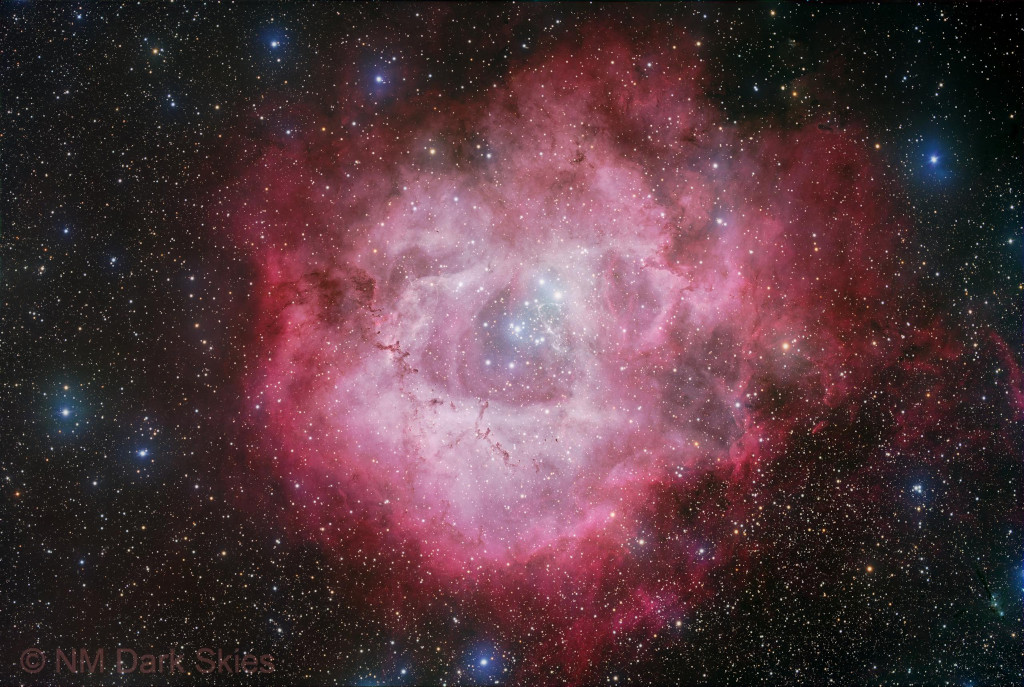
Merl Saunders (February 14, 1934 – October 24, 2008) was an American multi-genre musician who played piano and keyboards, favoring the Hammond B-3 console organ. Born in San Mateo, California, United States, Saunders attended Polytechnic High School in San Francisco. In his first band in high school was singer Johnny Mathis.He served in the U.S. Air Force from 1953 to 1957. He worked as musical director of the Billy Williams Revue and served in a similar capacity in Oscar Brown Jr.‘s off-Broadway show, Big Time Buck White.
He gained notice in the 1970s when he began collaborating with Jerry Garcia, with whom he had begun playing in 1971 at a small Fillmore Street nightclub called The Matrix. He sat in with the Grateful Dead, and co-founded the Saunders/Garcia Bandwhich produced three albums, and which became the Legion of Mary, with the addition of Martin Fierro (sax) in 1974. It disbanded the following year, but he and Garcia continued to collaborate in the band Reconstruction during 1979, collaborating with Ed Neumeister (trombone), Gaylord Birch (drums) and John Kahn (bass).
more...Timothy Charles Buckley III (February 14, 1947 – June 29, 1975) was an American musician. He began his career based in folk rock, but subsequently experimented with genres such as psychedelia, jazz, the avant-garde, and funk paired with his unique five-octave vocal range.
His commercial peak came with the 1969 album Happy Sad, reaching No. 81 on the charts, while his experimental 1970 album Starsailor went on to become a cult classic. The latter contained his best known song, “Song to the Siren.”
Buckley died at the age of 28 from a heroin and morphine overdose. He left behind one biological son, Jeff, who himself was a highly regarded singer who died young, as well as an adopted son, Taylor. On the evening of June 29, he accompanied longtime friend Richard Keeling to his house. At some point, Keeling produced a bag of heroin, some of which Buckley snorted.
Attempts by friends and paramedics to revive him were unsuccessful, and he was pronounced dead on arrival.
The coroner‘s report stated that Buckley died at 9:42 p.m. on June 29, 1975, from “acute heroin/morphine and ethanol intoxication due to inhalation and ingestion of overdose”.
more...
Samuel Gene Maghett (February 14, 1937 – December 1, 1969), known as Magic Sam, was an American Chicago blues musician. He was born in Grenada County, Mississippi, and learned to play the blues from listening to records by Muddy Watersand Little Walter. After moving to Chicago at the age of 19, he was signed by Cobra Records and became well known as a bluesman after the release of his first record, “All Your Love”, in 1957. He was known for his distinctive tremolo guitar playing.
The stage name Magic Sam was devised by Sam’s bass player and childhood friend Mack Thompson at Sam’s first recording session for Cobra, as an approximation of “Maghett Sam”. The name Sam was using at the time, Good Rocking Sam, was already being used by another artist. His career was cut short when he suddenly died of a heart attack in December 1969. He was 32 years old.
more...
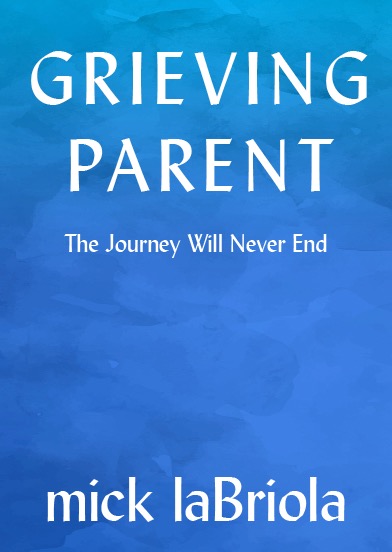
Screenshot
Judith Aileen Dyble (pronounced Die-bull; 13 February 1949 – 12 July 2020) was an English singer-songwriter, most notable for being a vocalist and a founding member of Fairport Convention and Trader Horne. In addition, she and Ian McDonald joined and recorded several tracks with Giles, Giles and Fripp, who later became King Crimson. These tracks surfaced on the Brondesbury Tapes CD and Metaphormosis vinyl LP.
more...Anthony “Rebop” Kwaku Baah (13 February 1944 – 12 January 1983) was a Ghanaian percussionist who worked with the 1970s rock groups Traffic and Can.
Baah was born in 1944 in Konongo, Gold Coast. In the Akan culture of Ghana, Kwakuis a name meaning “male born on Wednesday”.
In 1969, Baah performed on Randy Weston‘s album African Rhythms. In the same year he worked with Nick Drake on the song “Three Hours”, posthumously released in 2004 on the compilation album Made to Love Magic. He then joined the English band Traffic in 1971, having met them in Sweden during a tour. He appeared on the albums Welcome to the Canteen, The Low Spark of High Heeled Boys, Shoot Out at the Fantasy Factory, On the Road, and When the Eagle Flies.
In 1973, he performed in the all-star Eric Clapton’s Rainbow Concert. After Traffic disbanded in 1974, he played on Steve Winwood’s self-titled debut solo album, which was released in 1977. Also in 1977, he joined the German band Can along with former Traffic bassist Rosko Gee, playing with them until their breakup in 1979, appearing on the albums Saw Delight, Out of Reach and Can.
In 1982, Baah recorded an album with Zahara. Baah died of a cerebral hemorrhage during a performance in Stockholm, Sweden, in January 1983, where he was on tour with Jimmy Cliff. His final album, Melodies in a Jungle Man’s Head, was released in its unfinished state.
more...Thursday February 13th 2025 7pm. The third in a series of performances of the Little Shop of Horrors by Theatre 55 at the Gremlin Theater in St Paul. Music by Shirley Pier, Lyra Olson, Jamie Carter and mick laBriola. Featuring vocalists Patty Lacy and Van Nixon.

more...
Riding high in the constellation of Auriga, beautiful, blue VdB 31 is the 31st object in Sidney van den Bergh’s 1966 catalog of reflection nebulae. It shares this well-composed celestial still life with dark, obscuring clouds B26, B27, and B28, recorded in Edward E. Barnard’s 1919 catalog of dark markings in the sky. All are these nebulae are interstellar dust clouds. Barnard’s dark nebulae block the light from background stars. For VdB 31 the dust preferentially reflects bluish starlight from embedded, hot, variable star AB Aurigae. Exploring the environs of AB Aurigae with the Hubble Space Telescope has revealed the several million year young star is itself surrounded by a flattened dusty disk with evidence for the ongoing formation of a planetary system. AB Aurigae is about 470 light-years away. At that distance this cosmic canvas would span about eight light-years.
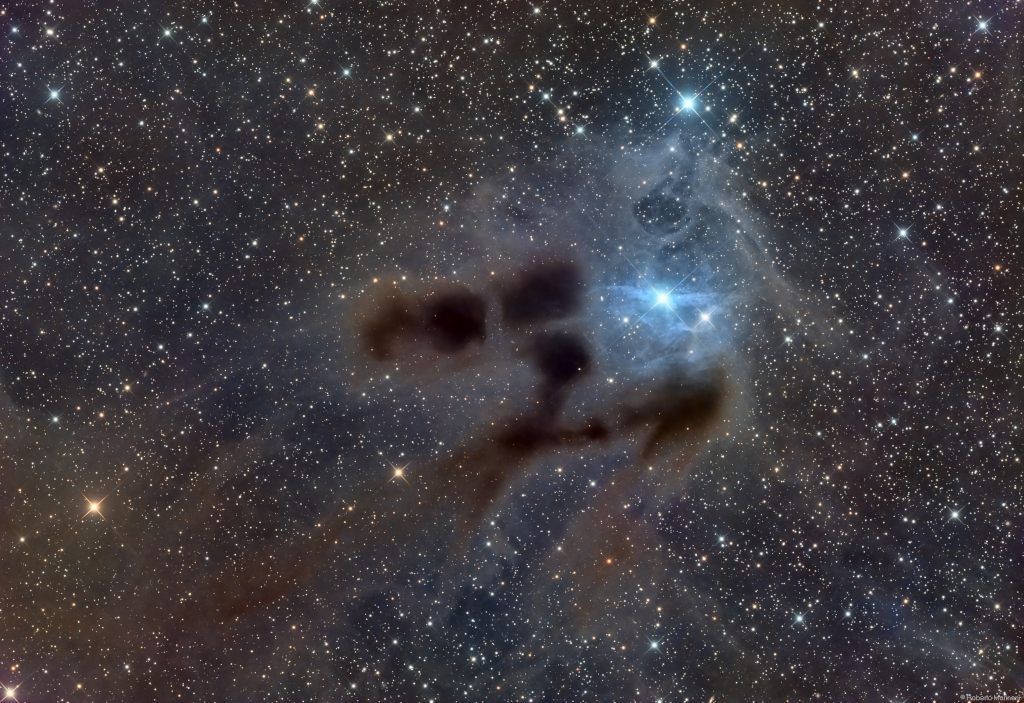
Peter Brian Gabriel (born 13 February 1950) is an English singer, songwriter, musician, and human rights activist. He came to prominence as the original frontman of the rock band Genesis. He left the band in 1975 and launched a solo career with “Solsbury Hill” as his first single. After releasing four successful studio albums, all titled Peter Gabriel, his fifth studio album So (1986) became his best-selling release and is certified triple platinum in the UK and five times platinum in the US. The album’s most successful single, “Sledgehammer“, won a record nine MTV Awards at the 1987 MTV Video Music Awards. A 2011 Time report said “Sledgehammer” was the most played music video of all time on MTV.
A supporter of world music for much of his career, Gabriel co-founded the World of Music, Arts and Dance (WOMAD) festival in 1982, and has continued to produce and promote world music through his Real World Records label. He has pioneered digital distribution methods for music and co-founded OD2, one of the first online music download services.[4] He has also been involved in numerous humanitarian efforts. In 1980, he released the anti-apartheid single “Biko“. He has participated in several human rights benefit concerts, including Amnesty International‘s Human Rights Now! tour in 1988, and co-founded the human rights organisation Witness in 1992. He developed the idea for The Elders, an organisation of public figures noted as peace activists, alongside Nelson Mandela and Richard Branson in 2007.
Gabriel has won three Brit Awards, six Grammy Awards, 13 MTV Video Music Awards, the first Pioneer Award at the BT Digital Music Awards, the Q Lifetime Achievement, the Ivor Novello Award for Lifetime Achievement, and the Polar Music Prize. He was named a BMI Icon at the 57th annual BMI London Awards for his “influence on generations of music makers”. In recognition of his human rights activism, he received the Man of Peace award from the Nobel Peace Prize laureates in 2006, and Time magazine named him one of the 100 most influential people in the world in 2008. AllMusic described him as “one of rock’s most ambitious, innovative musicians, as well as one of its most political”. He was inducted into the Rock and Roll Hall of Fame as a member of Genesis in 2010, and as a solo artist in 2014. In recognition of his musical achievements, he was awarded an honorary doctorate from the University of South Australia in 2015.
more...King Floyd (February 13, 1945 – March 6, 2006) was a New Orleans soul singer, best known for his top 10 hit from 1970, “Groove Me“. In 1970, Wardell Quezergue, an arranger of R&B scores, persuaded Floyd to record “Groove Me” with Malaco Records in Jackson, Mississippi. Jean Knight recorded her hit, “Mr. Big Stuff,” in the same sessions.
At first, “Groove Me” was a B-side to another Floyd song, “What Our Love Needs.” New Orleans radio DJs started playing “Groove Me” and the song became a local hit. Atlantic Records picked up national distribution of “Groove Me,” which topped the United States R&B chart and reached number 6 on the Billboard Hot 100. This disc sold over one million copies, and received a gold disc awarded by the R.I.A.A. in December 1970.Floyd quit his job at the post office to perform a U.S. tour. His follow-up single, “Baby Let Me Kiss You” climbed up to number 29 on the Billboard top 40 charts in 1971.
more...Wardell Gray (February 13, 1921 – May 25, 1955 Oklahoma City, OK) was an American jazz tenor saxophonist. Near the Congo Club was the Three Sixes. A young dancer, Jeri Walker, knew Earl Hines, and when the Hines band came through Detroit in late 1943, she persuaded Hines to hire Gray on alto saxophone since there was no tenor saxophone job at the time. This was a break for the 21-year-old, as the Earl Hines Orchestra was not only nationally known but had nurtured the careers of emerging bebop musicians such as Dizzy Gillespie and Charlie Parker. Although most of them had left when Gray joined, playing with the Hines band was a stimulating experience. He married Jeri Walker in Chicago in September 1945.
In 1955 May 26th he was found on a stretch of desert on the outskirts of Las Vegas[6] dead with a broken neck. At the age of 34, he died of a heroin overdose.
more...
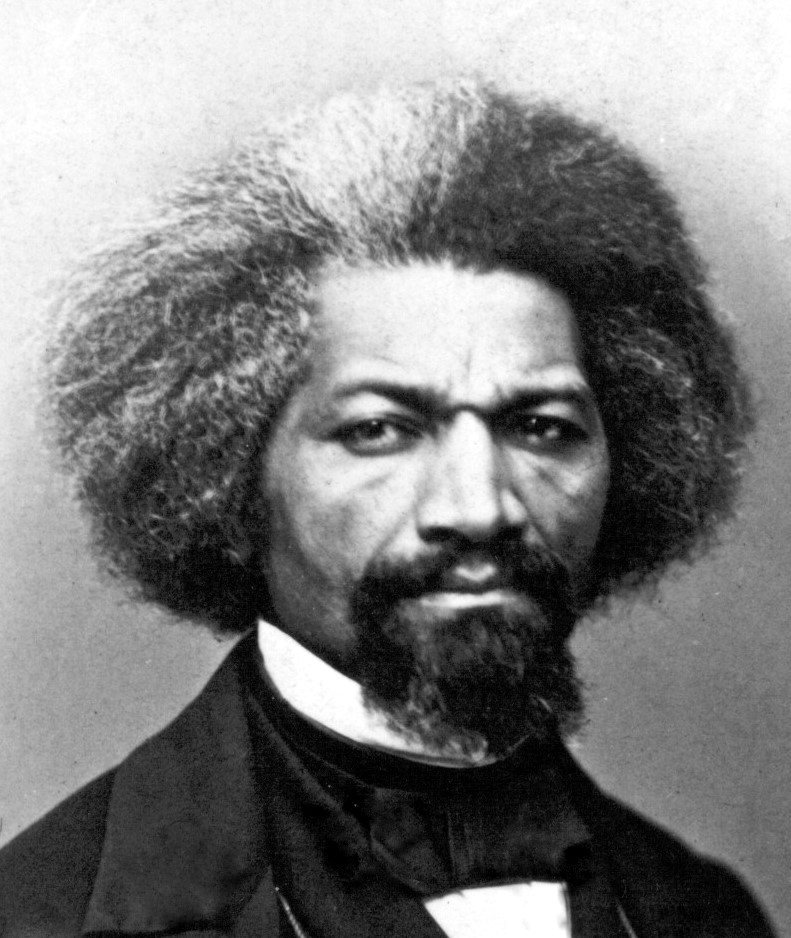
Big John Wrencher (February 12, 1923 – July 15, 1977), also known as One Arm John, was an American blues harmonica player and singer, well known for playing at the Maxwell Street Market in Chicago in the 1960s. He toured Europe in the 1970s.
John Thomas Wrencher was born in Sunflower, Mississippi, United States. He became interested in music as a child and taught himself to play the harmonica at an early age. Beginning in the early 1940s, he worked as an itinerant musician in Tennessee, Missouri, Indiana, and Illinois. By the mid-1940s he had arrived in Chicago and was playing on Maxwell Street and at house parties with Jimmy Rogers, Claude “Blue Smitty” Smith and John Henry Barbee. In the 1950s he moved to Detroit, where he worked with the singer and guitarist Baby Boy Warren and formed his own trio, which performed in the Detroit area and in Clarksdale, Mississippi.
more...More Posts
- Herb Pomeroy
- Richard Davis
- World Music with Sudeshna Bhattacharya and Tanmoy Bose
- Daily Roots with the Soul Vendors
- The Cosmos with NGC 2736
- Matima Kinuani Mpiosso
- Gene Ammons
- Shorty Rogers
- Ali Akbar Khan
- World Music with Nitin Sawhney
- Daily Roots with the Octaves
- The Cosmos with Abell 2813
- Al Green
- Lowell George
- Jack Casady
- Eddie Marshall
- Bud Freeman
- World Music with the Kasai Allstars feat Basokin
- Daily Roots with Jackie Mittoo
- The Cosmos with NGC 2024
